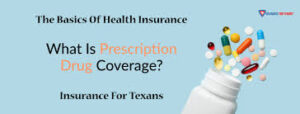
Prescription Coverage Pitfalls – Are You Covered?
Filling your prescription should be straightforward—but for many, the process can become a frustrating maze of confusing rules, unexpected costs, and denials.
Prescription drug coverage is a lifesaver—when it works. But hidden pitfalls in your insurance plan can leave you paying more than you bargained for or, worse, scrambling without vital medication.
Before your next refill, it’s crucial to know the common traps that can trip you up and how to avoid them.
💊 What Does Prescription Coverage Usually Include?
Most health insurance plans include prescription drug benefits, but the details vary widely. Coverage depends on:
-
Your plan’s formulary—the list of drugs your insurer covers
-
Whether the drug is generic, brand-name, or specialty
-
Your tier level—which affects copays or coinsurance
-
The pharmacy network you use
Understanding these basics helps you predict what you’ll owe and spot red flags early.
⚠️ Common Prescription Coverage Pitfalls
1. Formulary Surprises
Your insurance plan has a formulary, or approved drug list. If your medication isn’t on it, your claim might be denied or cost you much more out-of-pocket.
Even if your drug is listed, it might be placed on a higher tier, meaning a bigger copay.
💡 Tip: Always check if your medication is on your plan’s formulary before your prescription is filled.
2. Prior Authorization Headaches
Many plans require prior authorization—an approval process where your doctor must prove the medication is medically necessary.
This can delay your prescription by days or weeks. And if the insurer denies authorization, you might have to appeal or switch medications.
💡 Tip: Ask your doctor to start the authorization process early and follow up regularly.
3. Step Therapy Frustrations
Step therapy forces you to try cheaper drugs before “stepping up” to the prescribed medication. If you don’t comply, your claim can be denied.
While it aims to reduce costs, step therapy can delay effective treatment and cause frustration.
4. Coverage Gaps and “Donut Holes”
For Medicare Part D users, there’s a “coverage gap” known as the donut hole—a period when you pay higher out-of-pocket costs for prescriptions.
Even non-Medicare plans may have coverage limits or annual maximums that leave you exposed after a certain spending point.
5. Pharmacy Network Restrictions
Your insurer may require you to use specific pharmacies or mail-order services to get the best rates.
Going out-of-network might mean higher costs or claim denial.
6. Specialty Drug Surprises
Specialty medications (often for conditions like cancer or rheumatoid arthritis) can come with sky-high costs and special coverage rules.
These drugs may require special handling, limited pharmacies, or additional approvals.
🧠 How to Navigate Prescription Coverage
-
Review your plan’s drug list regularly and consult your pharmacist about cost-saving alternatives.
-
Ask your doctor about generics or therapeutically equivalent drugs that your plan prefers.
-
Use in-network pharmacies or mail-order programs when possible.
-
Keep copies of all authorizations, appeals, and correspondence.
-
Know your rights to appeal denials—often, a doctor’s letter can overturn a rejection.
-
Consider discount programs or manufacturer coupons if insurance coverage falls short.
📅 Plan Ahead for Prescription Costs
Prescription coverage can change yearly. During open enrollment, review your plan’s drug coverage carefully, especially if you’re on long-term meds.
Switching plans or pharmacies can save you hundreds.
💬 When Coverage Fails: What to Do
-
Contact your insurer for a detailed explanation of denial.
-
Work with your doctor to submit an appeal or exception request.
-
Explore patient assistance programs offered by drug manufacturers.
-
Consider talking to a pharmacist about alternative therapies or payment options.
🔚 Bottom Line
Prescription coverage can be complicated—but understanding common pitfalls empowers you to avoid costly surprises and ensure you get the medications you need.
Don’t wait until you face a denied claim. Be proactive, ask questions, and take control of your prescription coverage.
Your health depends on it.